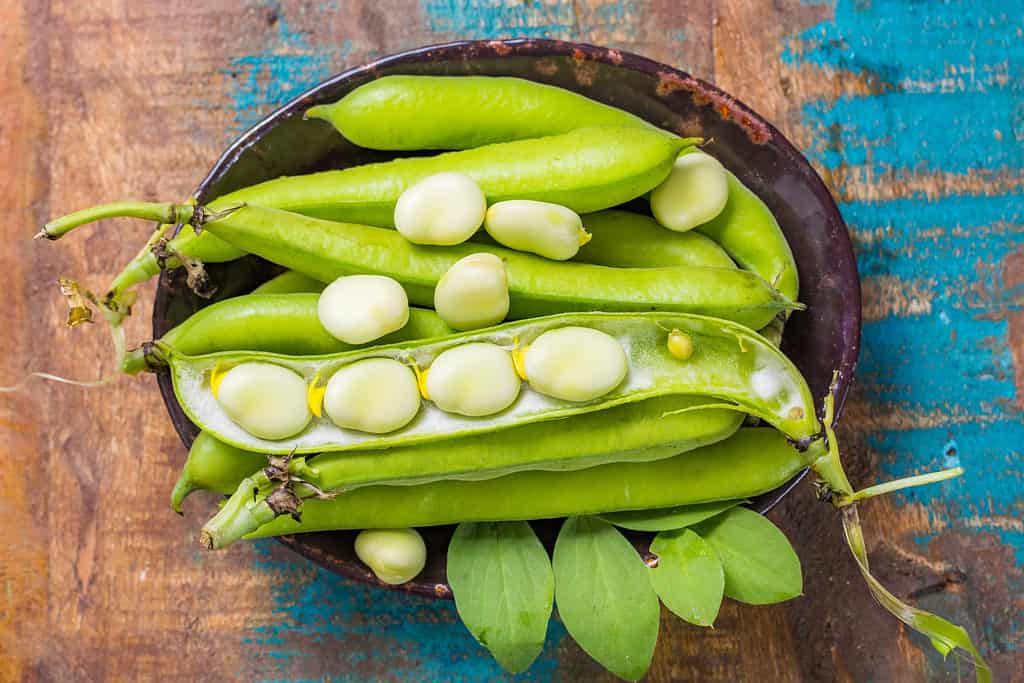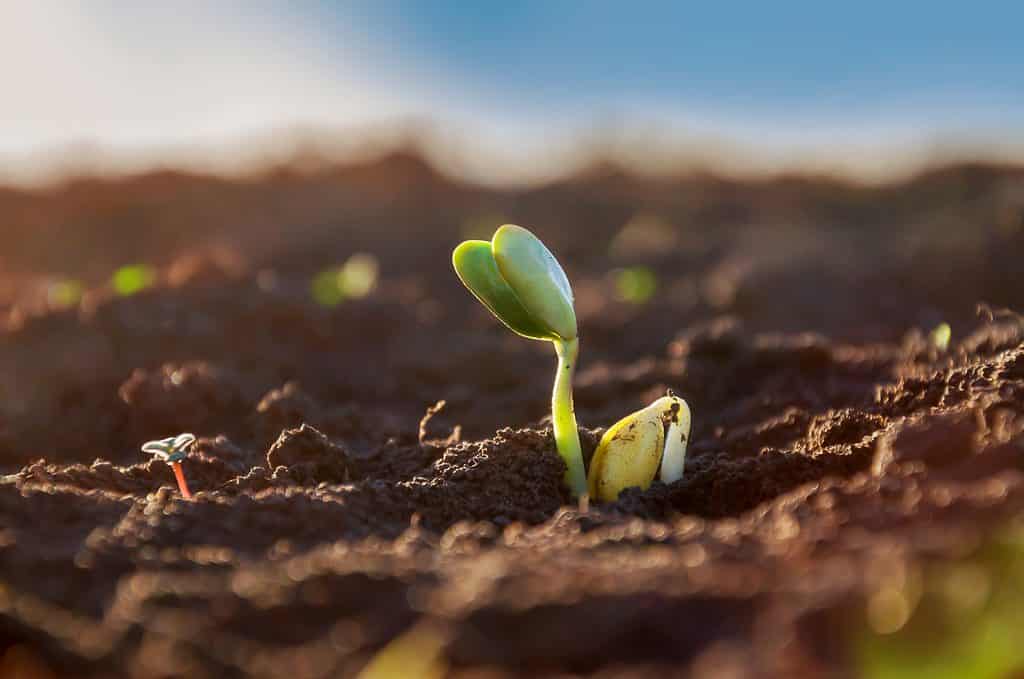Edamame and lima beans have a lot in common. They’re both legumes, they both have high protein content, and they both grow in pods. But one thing that sets them apart. Edamame is soybeans harvested before they fully mature and have a slightly sweet flavor, while lima beans are fully mature and have a more traditional bean taste.
You can buy pre-shelled if you love edamame or lima beans but don’t want to shell the pods yourself (or if you’re afraid of choking on a stray bean). They make a great snack or appetizer at parties because they’re easy to eat with your fingers or toothpicks. You can buy them frozen or canned from most grocery stores — just remember not to overcook them when preparing them in the microwave or on the stovetop.
So, if you want to know the difference between edamame and lima beans, you’ve come to the right place. Learn more below!
Comparing Edamame and Lima Beans
| Edamame | Lima Beans | |
|---|---|---|
| Classification | Kingdom: Plantae Clade: Tracheophytes Clade: Angiosperms Clade: Eudicots Clade: Rosids Order: Fabales Family: Fabaceae Subfamily: Faboideae Genus: Glycine Species: G. max | Kingdom: Plantae Clade: Tracheophytes Clade: Angiosperms Clade: Eudicots Clade: Rosids Order: Fabales Family: Fabaceae Subfamily: Faboideae Genus: Phaseolus Species: P. lunatus |
| Origin | Asia | Meso and South America |
| Description | – Grow 1-3 feet tall – Firm, green pods – Buttery taste | – Grow 2-12 feet tall – Green and speckled – Mild buttery flavor |
| Uses | – Edible beans – Attract pollinators – Reduce pests in the garden | – Edible beans – Attract pollinators – Reduce pests in the garden |
| How to Grow | – Plant seeds 2 inches deep and 2-4 inches apart – Soil pH of 6.0 – Use well-draining soil – Prefers full sun – Water regularly | – Plant seeds 1 inch deep and 2-4 inches apart – Acidic to neutral soil pH – Use loamy, well-draining soil – Prefers full sun – Water 1 inch per week |
Edamame vs. Lima Beans: Classification and Origin
Edamame (pronounced “eh-dah-mah-may”) is a fresh, young soybean. It’s a great protein and fiber source and contains antioxidants, which help prevent cell damage from free radicals. They are young soybeans that got harvested early.
You will find that soybean’s history dates back 7,000 years in China, and in 1275 there is written text on the name edamame. The cultivation of soybeans in the United States started in 1855, and Europe began to sell edamame in grocery stores as a good source of protein in 2008.
Lima beans are native to South America, and there are two types found. Firstly, there was an Andes domestication over 2,000 years ago, a large-seeded variety. The second is a small-seeded variety from Mesoamerica.
Lima beans are an edible pod that can be used as a vegetable or dried and eaten as a grain. They’re known for their high vitamin A content, which is important for healthy eyesight and good skin. In addition, their starchy texture makes them a versatile ingredient in many dishes – they can be served hot or cold, as part of a salad, or even on their own. They’re also rich in vitamins and minerals like thiamin (B1), niacin (B3), iron, phosphorus, potassium, and zinc.

Both edamame and lima beans (pictured) are excellent protein alternatives and are high in antioxidants and vitamins.
©barmalini/Shutterstock.com
Edamame vs. Lima Beans: Description
Edamame beans can grow 1-3 feet tall. They are green because they are young soybeans but packed with flavor. Compared to lima beans, edamame is firmer and has a buttery taste. Lima beans are speckled and green. They have a milder buttery taste and often get referred to as butter beans. The small variety of lima beans is lighter in color, pale green, and less starchy. In addition, lima beans can grow 2-12 feet tall.
Edamame vs. Lima Beans: How to Grow
Growing edamame and lima beans is a great way to save money and get fresh, healthy food on the table.
The first thing you need to do is decide whether or not you want to grow your edamame and lima beans in the garden or containers. If you’re planting them in containers, ensure they have proper drainage holes and are at least 18 inches deep. If you’re planting them in the garden, dig holes that are about 6 inches deep and fill them with composted soil. Make sure there’s enough room between each hole, around 2 feet, for the bean plants’ roots to spread out as they grow.
Growing edamame tips:
- Plant seeds 2 inches deep and 2-4 inches apart
- Soil pH of 6.0
- Use well-draining soil
- Prefers full sun
- Water regularly
Growing lima beans tips:
- Plant seeds 1 inch deep and 2-4 inches apart
- Acidic to neutral soil pH
- Use loamy, well-draining soil
- Prefers full sun
- Water 1 inch per week

Edamame (pictured) and lima bean plants require full sun and well-draining soil to thrive.
©zoyas2222/Shutterstock.com
Edamame vs. Lima Beans: Uses
Both edamame and lima beans are great for the garden, and there are many reasons why.
Firstly, lima beans and edamame are easy to grow, even if you’ve never grown anything. Second of all, they’re delicious! The edamame pods contain little green soybeans that taste great in a stir fry or salad. Lima beans taste mildly sweet, making them perfect for soups or stews.
Thirdly, both of these plants attract pollinators to your garden. So, if you want to attract bees and butterflies to your garden, grow these delicious beans. Bees love the nectar from the flowers on edamame plants, while butterflies love the flowers on lima bean plants.
Finally, both plants can help reduce pests in your garden by attracting beneficial insects like ladybugs and lacewings. Ladybugs eat aphids (one of the worst pests), while lacewings eat mites and other harmful insects that might be plaguing your garden.
The photo featured at the top of this post is © Boonchuay1970/Shutterstock.com
Sources
- Wikipedia, Available here: https://en.wikipedia.org/wiki/Soybean
- Wikipedia, Available here: https://en.wikipedia.org/wiki/Edamame
- Wikipedia, Available here: https://en.wikipedia.org/wiki/Lima_bean
- MasterClass, Available here: https://www.masterclass.com/articles/how-to-grow-edamame#eLGIVw0nDIIIE9Z1Z9urX
FAQs (Frequently Asked Questions)
What is a good substitute for edamame?
Lima beans and green peas are great substitutes for edamame.
Why is edamame so healthy?
Edamame is a great source of protein and is rich in antioxidants and vitamin K.
Is there another name for lima beans?
There are various names for lima beans, such as butter bean, Burma bean, and Madagascar bean.
Are lima beans hard to digest?
Lima beans are one of the most difficult to digest but are high in fiber and nutrients.
Thank you for reading! Have some feedback for us? Contact the AZ Animals editorial team.






